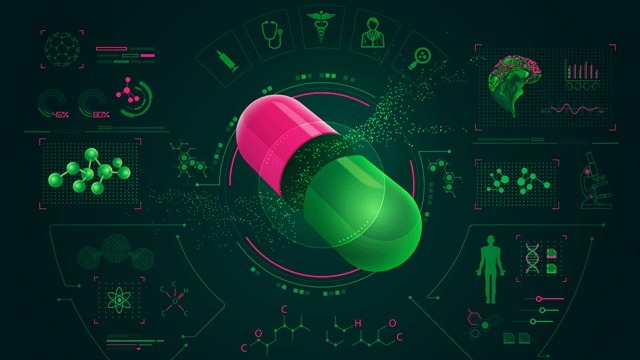hidden
Over 10 years experience of Traceability Solutions

By pharmatrax
Category: Technoloy
 No Comments
No Comments
Collaboration Is the X Factor in Making Precision Medicine a Success
Last year, the FDA approved 59 new molecular entities for the US market, the highest number ever approved in a single year. A key driver of this record level of approvals is the explosive growth of precision medicine. Since 2015, at least a fifth of all new drug approvals each year have been precision therapies and in 2018 they accounted for nearly half (42 percent). These numbers are a result of significant, sustained investment from pharma companies and highlight just how central this approach will be in life science R&D going forward. Yet investment in drug development isn’t the only factor that will determine the success of the precision medicine market.
As was outlined in a recent paper in Drug Discovery Today, companion diagnostics (CDx), i.e. in-vitro medical devices, and next-generation sequencing (NGS), are both essential to the practice of precision medicine, particularly since the costs of genetic testing have dropped so substantially that it’s now a mass-market product, which is generating vast amounts of data. If data formats and analyses for CDx and NGS can be standardized across all areas, this would allow data analyzed in discovery to be included in CDx, thereby cutting down on the amount of clinical testing required. Even more promising, it could even rescue drugs that have failed in clinical trials, providing an appropriate CDx could be identified for particular subpopulations. However, as new regulations are introduced, pharma companies and manufacturers alike need to ensure their CDx processes are compliant or we could see a deceleration in the flow of new precision therapies in the near future.
Understanding your obligations
One such regulation, which was recently passed by the EU is the “In Vitro Diagnostic Medical Device Regulation” (IVDR). By May 2022, all in vitro devices must abide by guidelines outlined in the legislation. Given that in vitro testing is a crucial part of drug development pharma companies urgently need to understand how to ensure their devices meet these new requirements or risk years of progress being written off due to non-compliance. Some of the key changes that pharma companies need to be aware of include:
- An expanded scope to cover diagnostic services (including digital ones), genetic testing and any other tests that provide data on whether a patient has a predisposition or susceptibility to a disease or treatment.
- A more rigorous clinical evidence process; as part of the new regulations, manufacturers are required to conduct clinical performance studies and provide evidence of safety and performance according to a device’s assigned risk class.
- Manufacturers will also face a more stringent documentation process when looking to achieve certification.
- There will be a longer post market surveillance period and the overall timeline for reporting is set to be reduced.
- Provisions will not be able to be ‘grandfathered’ in; every in vitro diagnostic device which is currently certified must be recertified in accordance with the new requirements.
Along with several other key changes included in the regulation, these requirements place significant data management demands on pharma companies and manufacturers alike. Complying with new regulations, especially ones as far-reaching as the IVDR, is always a challenging prospect and so organizations across the industry – including pharma companies, manufacturers, and regulators – should look at ways in which they can minimize the disruption. In particular, they should review ways that technologies such as AI and blockchain can help significantly ease the compliance burden by, for example, helping to discover biomarkers and improve diagnostics or providing an irrevocable, auditable trail of clinical research data.
Using these technologies to develop industry-wide standards for recording and filing experiment data could be hugely beneficial to all parties. This is because, once everyone is using the same formatting standards to file applications, it’s much faster for regulators to review and approve new drugs or devices, meaning companies can get to market quicker, allowing patients faster access to innovative therapies.
It takes a village
However, developing these techniques can be a difficult and arduous process. So, rather than each company going it alone, the industry needs to come together and share resources and the best practices they’ve discovered that enable easier compliance with IVDR requirements. Our mission at The Pistoia Alliance is to find ways to lower the barriers to innovation in life science R&D. As part of that mission, we have launched a Precision Medicine Community of Interest (CoI) to investigate how such collaboration can be done effectively. The CoI was launched in April 2018 with a workshop the findings from which led to the delivery of three subsequent workshops to address how companies can share resources and experiences around:
- Applying NGS technologies in precision medicine.
- Application of bioinformatics in support of precision medicine.
- Aligning research standards with clinical standards for precision medicine.
The community will continue to evolve to identify and document best practices and standards in the precision medicine ecosystem involving research-led patient charities, biopharma companies, CDx developers, technology suppliers, service providers and the regulatory and health technology assessment agencies.
By 2025, forecasters predict that the precision medicine market will be worth more than $85bn worldwide and expect it to grow by around 10 per cent annually between now and then. There is no doubt that the industry can potentially reach these numbers. However, doing so will rely on companies understanding and complying with regulation on both sides of the Atlantic. The CoI which we have set up aims to help ease this burden through better collaboration. Yet the success of projects like these depends on the involvement of professionals from across the industry. We would encourage all interested parties to get involved and share their experiences.



